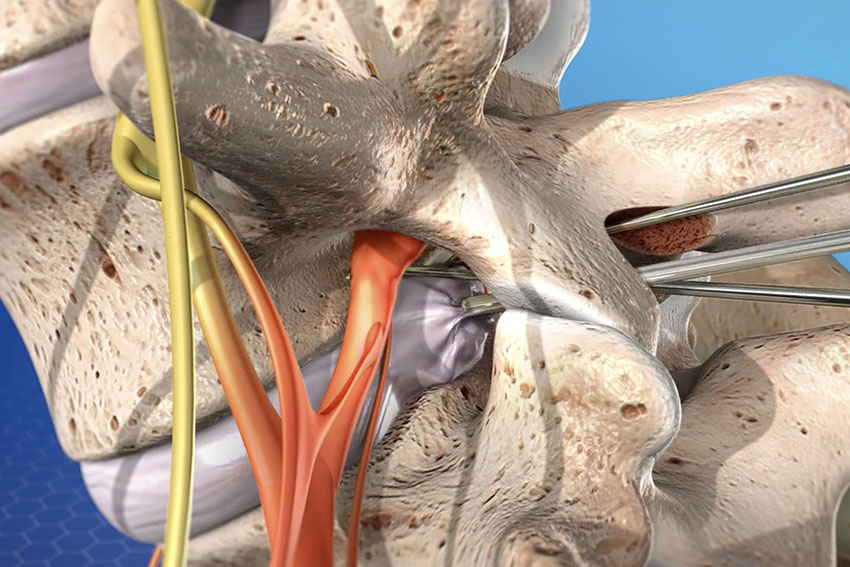
Discectomy – Advanced Spine Surgery for Lasting Pain Relief
Understanding a Herniated Disc
The spine is made up of vertebrae separated by soft, cushion-like discs that act as shock absorbers. Sometimes, due to age, injury, or strain, the soft inner portion of a disc bulges or ruptures through its outer layer — a condition known as a herniated disc or slipped disc.
When this herniated portion compresses nearby spinal nerves, it can cause:
Sharp or radiating pain in the neck or back
Numbness, tingling, or weakness in the arms or legs
Difficulty walking, standing, or bending
Persistent discomfort despite rest or medication
If conservative treatments such as physiotherapy, medications, or epidural injections fail to provide relief, discectomy surgery may be the best option to remove the pressure on the affected nerve.
What is a Discectomy?
A discectomy involves surgically removing the part of the herniated disc that is pressing on the spinal nerve. This decompression helps relieve pain, improve nerve function, and restore normal spinal movement.
At Vidarbha Institute of Spine Surgery, we specialize in Minimally Invasive Discectomy (MID) techniques that ensure smaller incisions, faster recovery, and less postoperative discomfort compared to traditional open surgery.
Types of Discectomy Procedures
Our expert spine surgeons perform different types of discectomy based on the location and severity of the disc herniation:
1. Lumbar Discectomy
Performed to relieve nerve compression in the lower back (lumbar spine). It is ideal for patients suffering from sciatica or radiating leg pain.
2. Cervical Discectomy
Targets herniated discs in the neck (cervical spine) that cause arm pain, numbness, or weakness. Often combined with fusion or artificial disc replacement for stability.
3. Microdiscectomy
A minimally invasive version of traditional discectomy, where the surgeon uses a surgical microscope and specialized instruments to remove the herniated portion precisely, preserving healthy tissues.
4. Endoscopic Discectomy
An ultra-minimally invasive approach that uses an endoscope (tiny camera) and micro-instruments through a small incision, allowing faster healing and minimal scarring.
Advantages of Discectomy at Vidarbha Institute of Spine Surgery
We combine surgical expertise with advanced technology to provide safe, effective, and lasting relief for spine conditions.
Our key advantages include:
Expert Spine Surgeons: Highly skilled specialists with extensive experience in performing complex spinal surgeries.
Minimally Invasive Techniques: Reduced pain, blood loss, and hospital stay with faster recovery times.
Precision Imaging & Navigation: Use of advanced MRI, intraoperative X-ray, and endoscopic visualization ensures high accuracy.
Comprehensive Rehabilitation: Personalized physiotherapy and rehabilitation programs post-surgery for optimal recovery.
Patient-Centered Care: Every patient receives individualized attention, from diagnosis to post-operative follow-up.
Who is a Candidate for Discectomy?
You may be advised to undergo a discectomy if:
You have persistent back or leg pain despite 6–8 weeks of conservative treatment.
Pain radiates down your arm or leg, limiting daily activities.
You experience numbness or muscle weakness due to nerve compression.
MRI or CT scans confirm a herniated disc causing nerve impingement.
Our specialists at Vidarbha Institute of Spine Surgery will evaluate your medical history, imaging results, and lifestyle factors to determine whether discectomy is right for you.
The Discectomy Procedure – Step by Step
Anesthesia: The surgery is performed under general or spinal anesthesia.
Incision: A small incision is made over the affected spinal region.
Visualization: Using advanced magnification or an endoscope, the surgeon identifies the herniated disc.
Removal: The herniated portion of the disc is gently removed to relieve nerve pressure.
Closure: The incision is closed with minimal sutures, promoting quick healing.
The entire procedure typically lasts between 1 to 2 hours. Patients often notice significant pain relief immediately after surgery.
Recovery and Rehabilitation
At Vidarbha Institute of Spine Surgery, we focus on early mobilization and guided rehabilitation to help you return to your normal routine swiftly.
Post-surgery care includes:
Light walking within 24 hours after surgery
Gradual return to normal activities in 2–4 weeks
Customized physiotherapy sessions for posture correction and muscle strengthening
Follow-up consultations to monitor healing and spinal alignment
Most patients can resume work and light activities within a few weeks, while complete recovery typically occurs within 6–8 weeks, depending on the individual’s condition and occupation
Why Choose Vidarbha Institute of Spine Surgery?
Comprehensive Spine Care: Diagnosis, treatment, surgery, and rehabilitation — all under one roof.
Experienced Team: Board-certified orthopedic and neurosurgeons with a focus on spinal disorders.
Cutting-Edge Facilities: Equipped with modern operation theaters, digital imaging, and rehabilitation units.
Personalized Treatment: Every procedure is planned to suit the patient’s specific spinal anatomy and health goals.
High Success Rate: Proven track record in delivering excellent surgical outcomes and long-term relief.
